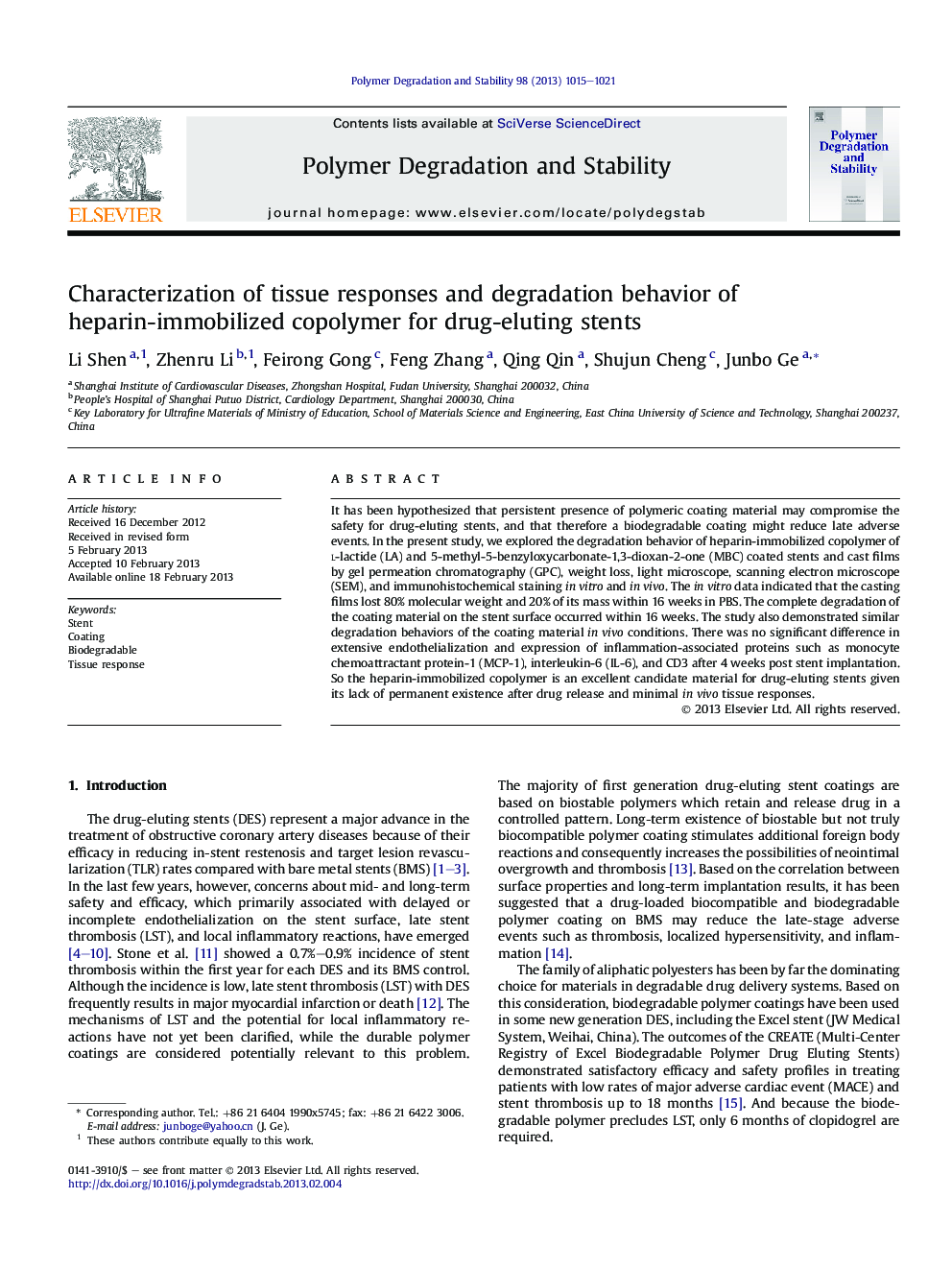| Article ID | Journal | Published Year | Pages | File Type |
|---|---|---|---|---|
| 5202346 | Polymer Degradation and Stability | 2013 | 7 Pages |
Abstract
It has been hypothesized that persistent presence of polymeric coating material may compromise the safety for drug-eluting stents, and that therefore a biodegradable coating might reduce late adverse events. In the present study, we explored the degradation behavior of heparin-immobilized copolymer of l-lactide (LA) and 5-methyl-5-benzyloxycarbonate-1,3-dioxan-2-one (MBC) coated stents and cast films by gel permeation chromatography (GPC), weight loss, light microscope, scanning electron microscope (SEM), and immunohistochemical staining in vitro and in vivo. The in vitro data indicated that the casting films lost 80% molecular weight and 20% of its mass within 16 weeks in PBS. The complete degradation of the coating material on the stent surface occurred within 16 weeks. The study also demonstrated similar degradation behaviors of the coating material in vivo conditions. There was no significant difference in extensive endothelialization and expression of inflammation-associated proteins such as monocyte chemoattractant protein-1 (MCP-1), interleukin-6 (IL-6), and CD3 after 4 weeks post stent implantation. So the heparin-immobilized copolymer is an excellent candidate material for drug-eluting stents given its lack of permanent existence after drug release and minimal in vivo tissue responses.
Related Topics
Physical Sciences and Engineering
Chemistry
Organic Chemistry
Authors
Li Shen, Zhenru Li, Feirong Gong, Feng Zhang, Qing Qin, Shujun Cheng, Junbo Ge,
